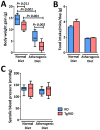Anti-atherogenic effect of hydrogen sulfide by over-expression of cystathionine gamma-lyase (CSE) gene
- PMID: 25397776
- PMCID: PMC4232559
- DOI: 10.1371/journal.pone.0113038
Anti-atherogenic effect of hydrogen sulfide by over-expression of cystathionine gamma-lyase (CSE) gene
Abstract
Hydrogen sulfide (H2S) is an important gaseous signaling molecule that functions in physiological and pathological conditions, such as atherosclerosis. H2S dilates vessels and therefore has been suggested as an anti-atherogenic molecule. Since cystathionine gamma-lyase (CSE) enzyme is responsible for producing H2S in the cardiovascular system, we hypothesized that up-regulation of CSE expression in vivo with preservation of H2S bioactivity can slow down plaque formation and, can serve as a therapeutic strategy against atherosclerosis. In this study, C57BL/6 wild type mice (WT), ApoE knockout mice (KO) and transgenic ApoE knockout mice overexpressing CSE (Tg/KO) at four weeks of age were weaned. They were then fed with either normal or atherogenic diet for 12 weeks. At week 16, serial plasma lipid levels, body weight, and blood pressure were measured prior to euthanization of the mice and the size of atherosclerotic plaques at their aortic roots was measured. Tg/KO mice showed an increase in endogenous H2S production in aortic tissue, reduced atherosclerotic plaque sizes and attenuation in plasma lipid profiles. We also showed an up-regulation in plasma glutathionine peroxidase that could indicate reduced oxidative stress. Furthermore, there was an increase in expression of p-p53 and down regulation of inflammatory nuclear factor-kappa B (NF-κB) in aorta. To conclude, alteration of endogenous H2S by CSE gene activation was associated with reduced atherosclerosis in ApoE-deficient mice. Up-regulation of CSE/H2S pathway attenuates atherosclerosis and this would be a potential target for therapeutic intervention against its formation.
Conflict of interest statement
Figures








Similar articles
-
Decreased endogenous production of hydrogen sulfide accelerates atherosclerosis.Circulation. 2013 Jun 25;127(25):2523-34. doi: 10.1161/CIRCULATIONAHA.113.002208. Epub 2013 May 23. Circulation. 2013. PMID: 23704252
-
Dysregulation of cystathionine γ-lyase (CSE)/hydrogen sulfide pathway contributes to ox-LDL-induced inflammation in macrophage.Cell Signal. 2013 Nov;25(11):2255-62. doi: 10.1016/j.cellsig.2013.07.010. Epub 2013 Jul 18. Cell Signal. 2013. PMID: 23872072
-
The interaction of estrogen and CSE/H2S pathway in the development of atherosclerosis.Am J Physiol Heart Circ Physiol. 2017 Mar 1;312(3):H406-H414. doi: 10.1152/ajpheart.00245.2016. Epub 2016 Dec 16. Am J Physiol Heart Circ Physiol. 2017. PMID: 27986657
-
Targeting hydrogen sulfide as a promising therapeutic strategy for atherosclerosis.Int J Cardiol. 2014 Mar 15;172(2):313-7. doi: 10.1016/j.ijcard.2014.01.068. Epub 2014 Jan 24. Int J Cardiol. 2014. PMID: 24491853 Review.
-
Regulation of cystathionine gamma-lyase/H₂S system and its pathological implication.Front Biosci (Landmark Ed). 2014 Jun 1;19(8):1355-69. doi: 10.2741/4286. Front Biosci (Landmark Ed). 2014. PMID: 24896355 Review.
Cited by
-
Cystathionine γ-lyase is expressed in human atherosclerotic plaque microvessels and is involved in micro-angiogenesis.Sci Rep. 2016 Oct 6;6:34608. doi: 10.1038/srep34608. Sci Rep. 2016. PMID: 27708362 Free PMC article. Clinical Trial.
-
Nitric Oxide and Hydrogen Sulfide Regulation of Ischemic Vascular Growth and Remodeling.Compr Physiol. 2019 Jun 12;9(3):1213-1247. doi: 10.1002/cphy.c180026. Compr Physiol. 2019. PMID: 31187898 Free PMC article. Review.
-
Use of Tissue Metabolite Analysis and Enzyme Kinetics To Discriminate between Alternate Pathways for Hydrogen Sulfide Metabolism.Biochemistry. 2017 Feb 21;56(7):986-996. doi: 10.1021/acs.biochem.6b01093. Epub 2017 Feb 7. Biochemistry. 2017. PMID: 28107627 Free PMC article.
-
Hydrogen sulfide attenuates TMAO‑induced macrophage inflammation through increased SIRT1 sulfhydration.Mol Med Rep. 2023 Jul;28(1):129. doi: 10.3892/mmr.2023.13016. Epub 2023 May 19. Mol Med Rep. 2023. PMID: 37203402 Free PMC article.
-
Diabetic Nephropathy and Gaseous Modulators.Antioxidants (Basel). 2023 May 12;12(5):1088. doi: 10.3390/antiox12051088. Antioxidants (Basel). 2023. PMID: 37237955 Free PMC article. Review.
References
-
- Libby P (2002) Inflammation in atherosclerosis. Nature 420: 868–874. - PubMed
Publication types
MeSH terms
Substances
LinkOut - more resources
Full Text Sources
Other Literature Sources
Molecular Biology Databases
Research Materials
Miscellaneous

